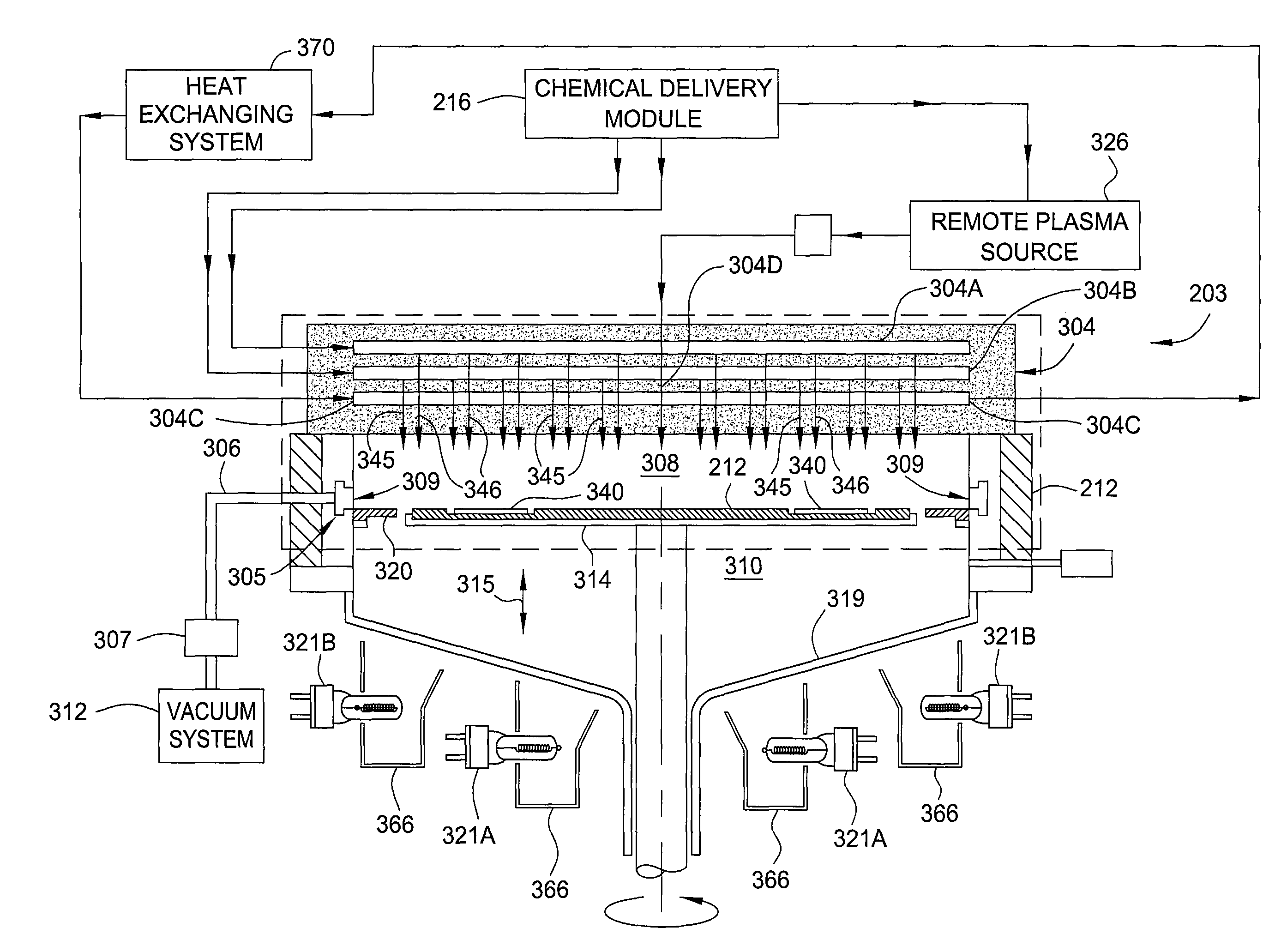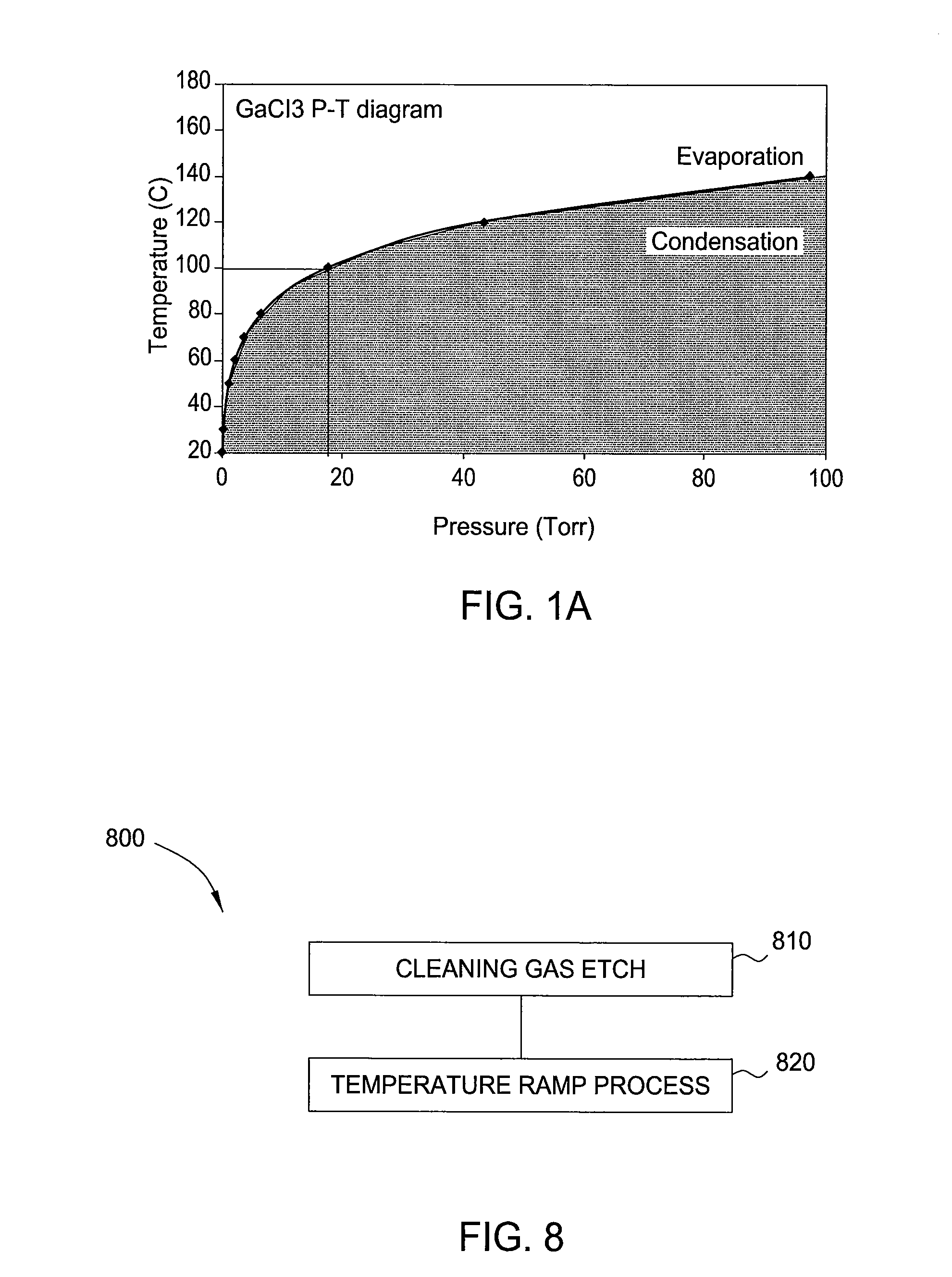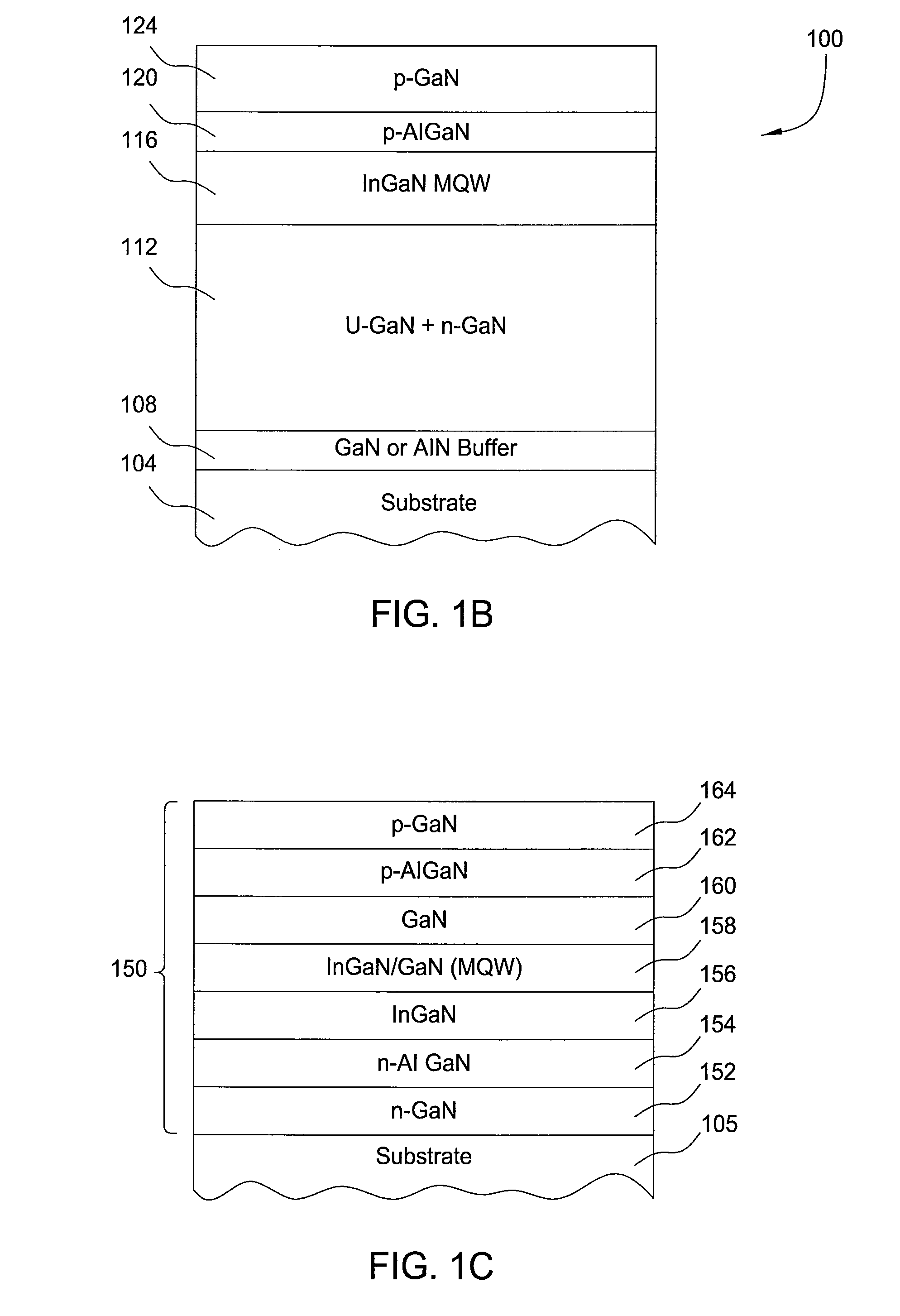Decontamination of mocvd chamber using nh3 purge after in-situ cleaning
a technology of in-situ cleaning and mocvd chamber, which is applied in the direction of coatings, chemical vapor deposition coatings, solid-state devices, etc., can solve the problems of affecting process reproducibility and uniformity, process cumbersomeness, and process conditions that dri
- Summary
- Abstract
- Description
- Claims
- Application Information
AI Technical Summary
Benefits of technology
Problems solved by technology
Method used
Image
Examples
Embodiment Construction
[0028]Embodiments described herein provide improved methods and apparatus for chamber cleaning which may be performed in-situ to remove unwanted deposition build-up off the interior surfaces of a substrate processing chamber thus reducing particle contamination while maintaining system uptime. In one embodiment, the chamber cleaning process is performed by pulsing a halogen containing gas, such as chlorine containing cleaning gas, into the substrate processing chamber to convert the unwanted deposition, such as gallium coating, on the surfaces of the chamber and the chamber components into a gaseous form, such as GaCl3, which may then be removed from the chamber.
[0029]As previously discussed, the growth of high temperature GaN by MOCVD or HVPE often results in severe parasitic deposition on chamber parts especially the showerhead. This parasitic deposition causes particles and flaking inside the chamber, resulting in drift of the process conditions, and most importantly affecting th...
PUM
| Property | Measurement | Unit |
|---|---|---|
| time | aaaaa | aaaaa |
| time | aaaaa | aaaaa |
| time | aaaaa | aaaaa |
Abstract
Description
Claims
Application Information
 Login to View More
Login to View More - R&D
- Intellectual Property
- Life Sciences
- Materials
- Tech Scout
- Unparalleled Data Quality
- Higher Quality Content
- 60% Fewer Hallucinations
Browse by: Latest US Patents, China's latest patents, Technical Efficacy Thesaurus, Application Domain, Technology Topic, Popular Technical Reports.
© 2025 PatSnap. All rights reserved.Legal|Privacy policy|Modern Slavery Act Transparency Statement|Sitemap|About US| Contact US: help@patsnap.com



